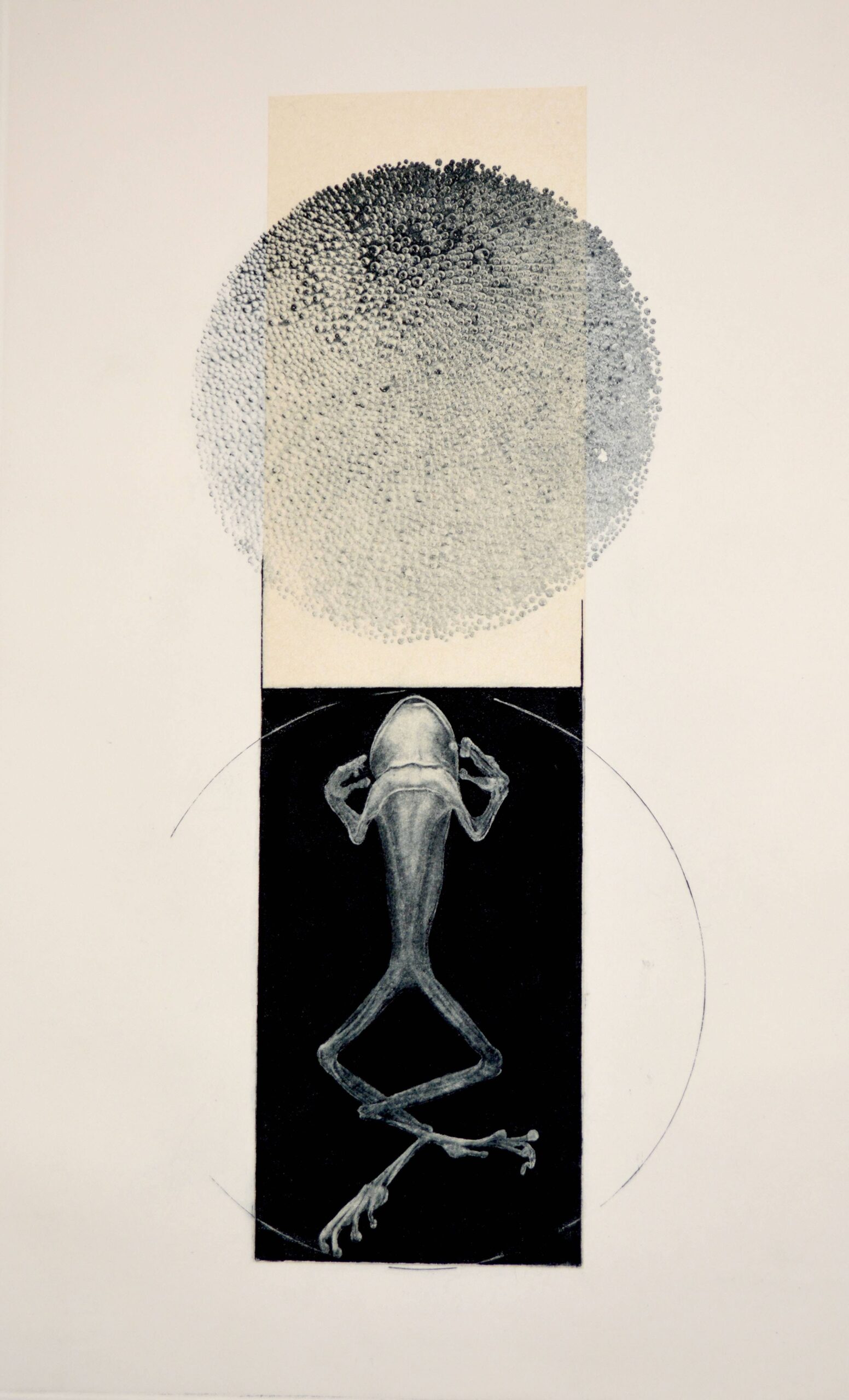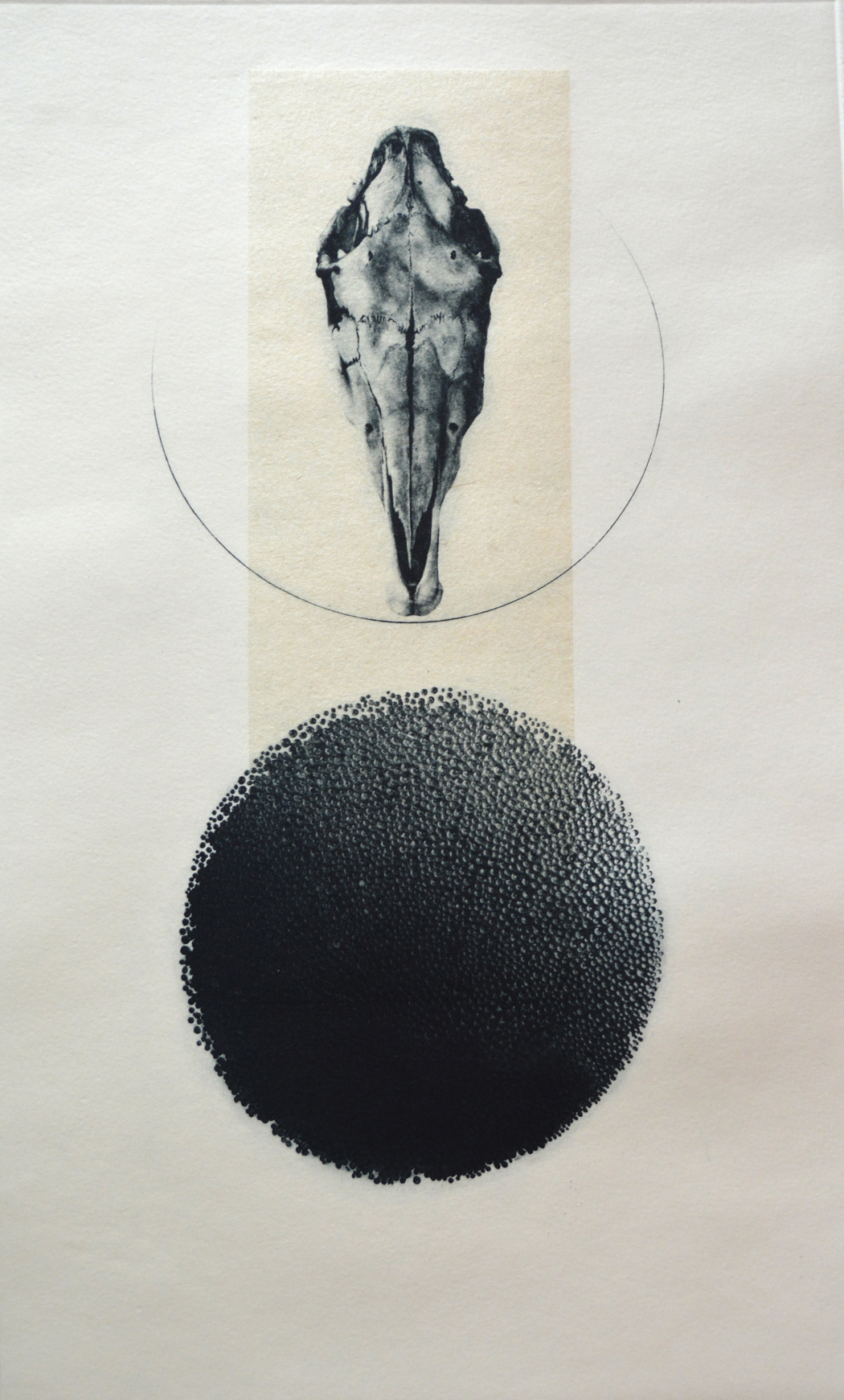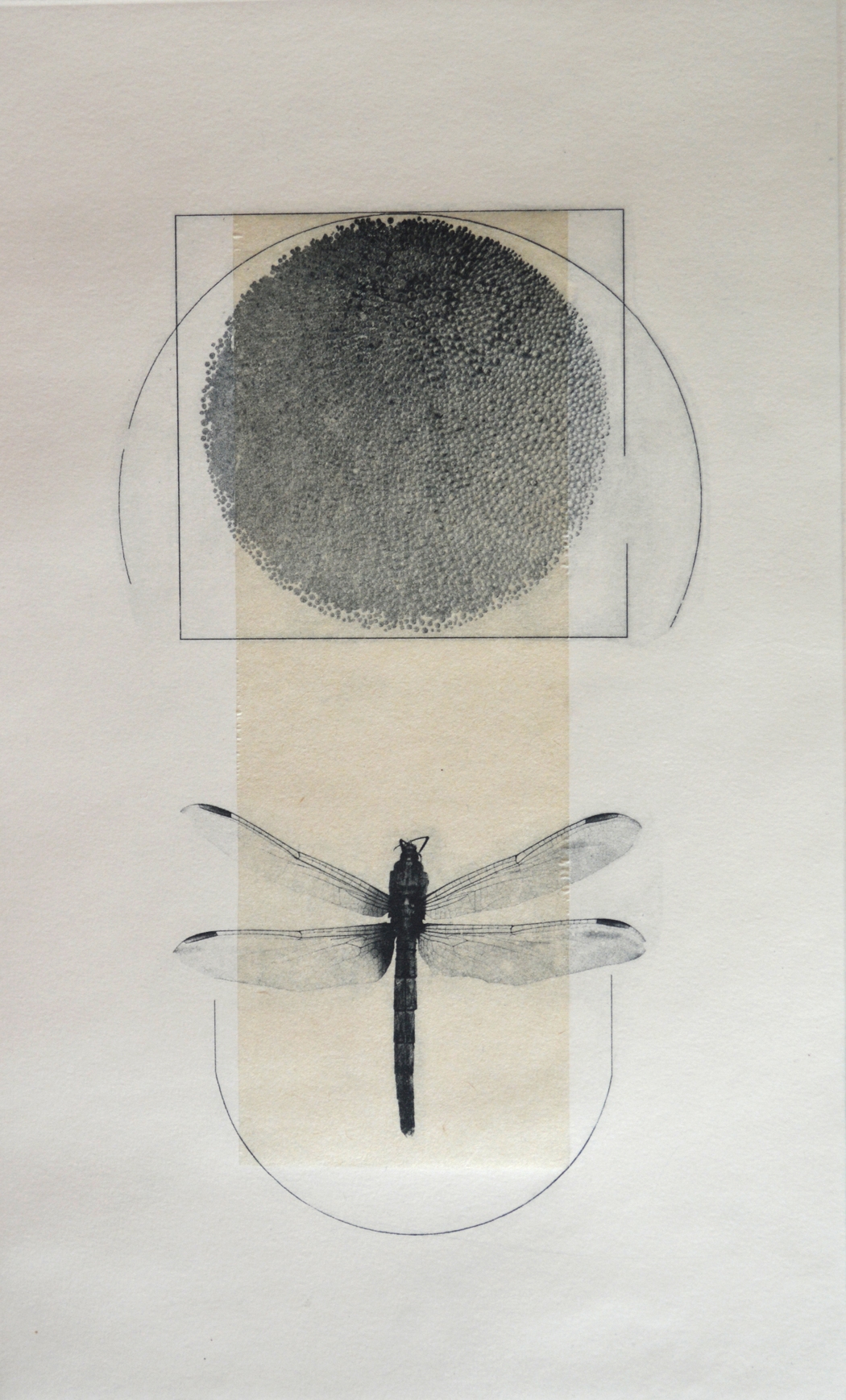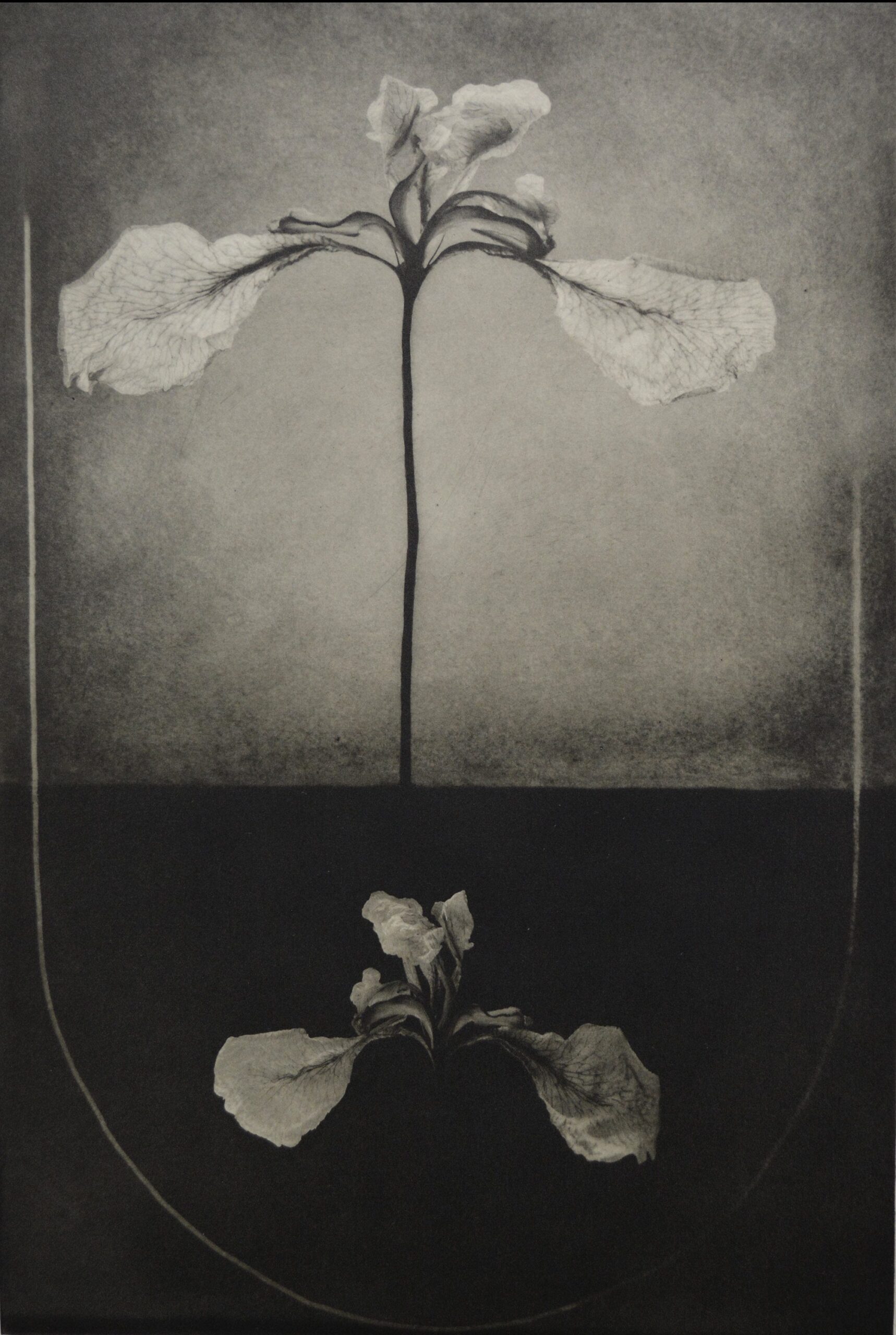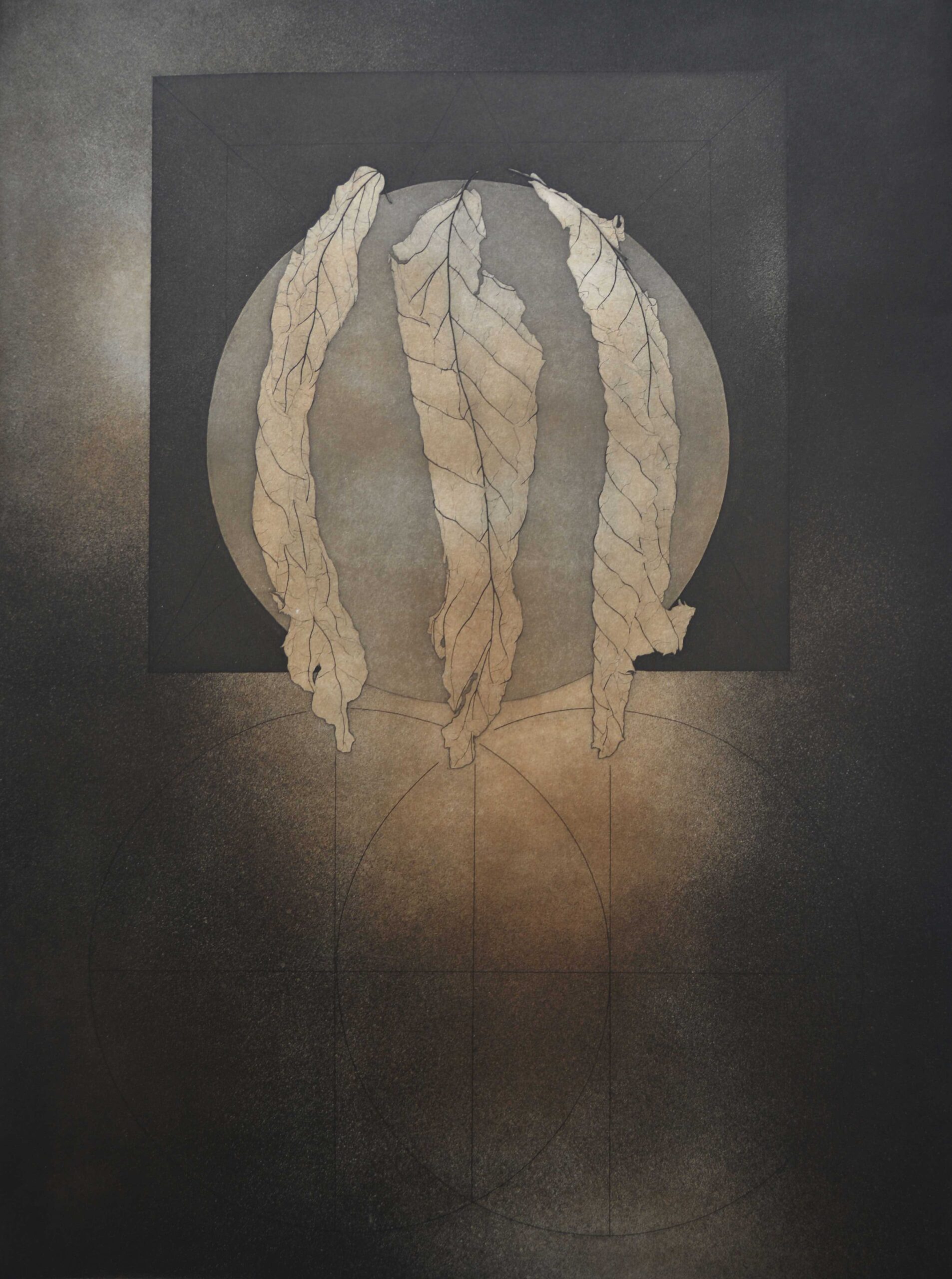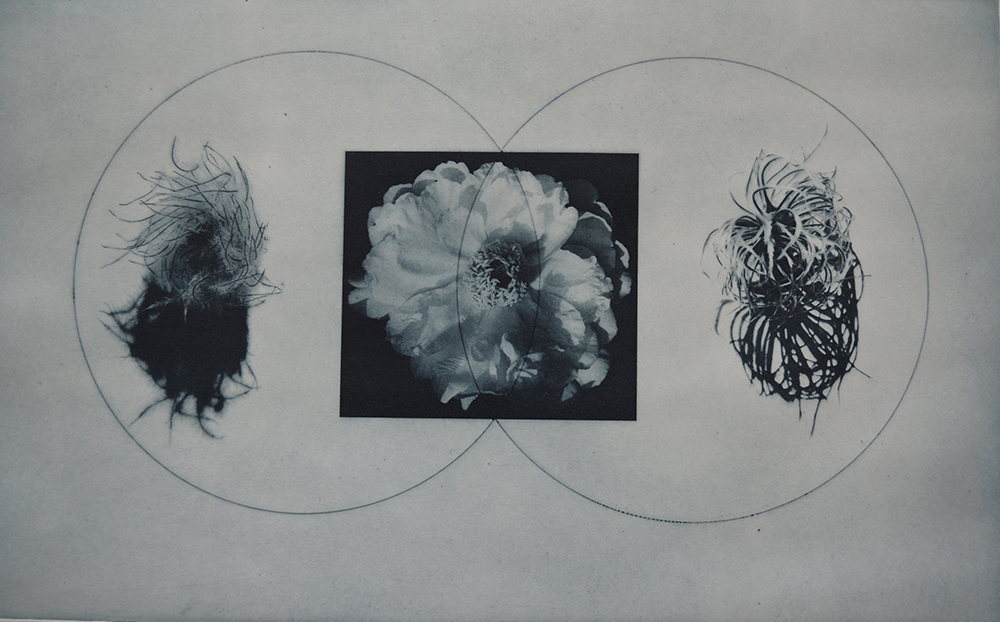
Printmaker Jenny Freestone’s photogravures are inspired by small natural forms and clean architectural motifs. The photogravure process is a “complex way of turning a photo or drawing into an etching,” she says. On a thin, metal plate that’s been photosensitized, she combines photographs on positive film with drawings on mylar and exposes the plate in a dark room. After soaking it for three minutes in water, she dries and inks the plate before pressing it to paper, as one does an etching.
In her work Shapeshifter, Clematis, Freestone combines the flower, which she finds in her garden, with an iconic Italian symbol called a mandorla—an almond-shaped form that often frames works of Christian iconography. “Before Christian times,” she says, “each sphere represented a sphere of knowledge, and where they met, a new unique sphere of perfection was achieved.” In the center of the mandorla, she depicts the clematis’s pistils in the process of self-pollinating. The clematis is being transformed into a seed head, and its left and right spheres are in different phases of this process. The image combines not only the floral and the architectural, it blends the feminine and the masculine, as well. “It is mainly Gothic architecture that pushes my buttons,” she says. “And nature does that, as well. On a beautiful spring morning—the colors and the freshness—have a similar effect of awe on our brains.”

